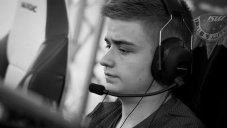A Glimpse Into A Simulated Moon Base On Earth
Chitanis - Jul 19, 2019

This dome on top of a large volcano in Hawaii is a simulated habitat that prepares astronauts for their missions on the moon.
- Scientists Want To Send 6.7 Million Samples, Including Sperm, To The Moon
- Russia Will Build A Lunar Space Station With China Because It's Done With NASA
- China’s Chang’e-5 Mission Returns To Earth With Moon Samples
You are seeing HI-SEAS, which stands for Hawaii Space Exploration Analog and Simulation. This small white dome settles atop a large volcano named Mauna Loa, here on Hawaii’s Big Island. The replicated environment is designed to help would-be astronauts prepare for life on Mars or the Moon.

This dome was set up in 2013, having a diameter of 11 meters. The living area covers a total of 111.5 square meters, with a maximum capacity of six adults.

The location is uninhabited, with few plants and plenty of lava rock insight.

This door will lead you inside the airlock, and then into the habitat.

Inside, you’ll see the airlock looking like this. On your left, there is a traditional spacesuit model used in previous exploration missions.

At the end of the staircase is a line of sleeping chambers and a single bathroom on your far left.

Within a limited space, the furniture includes a single bed, a desk, a small lamp, and some hanging hooks.

Walking down to the ground floor and towards the entrance.

At these workstations, the crews can make records of experiments or communicate with the outer world. To imitate the communication gap between Earth and Mars or the Moon, messages are often delayed for between seconds and 20 minutes.

Inside this dome, astronauts have themselves a TV for recreation and gym equipment for exercise. There’s light coming through a small window nearby where they can look outside.

There is an iPad to give crews the full view of every part of the dome for any necessary inspection.

A spacious bathroom downstairs, and indeed one of the most vital rooms. It is fully equipped with a shower, two toilets (both composting and urinal one).

Here, food and water have already been divided up. The crews only have 8 minutes each to shower every week. The note and stopwatch on the wall are to keep track of their shower time.

The solar panels installed outside generate energy to charge these batteries ready for use.

Anything food-related can be found here, only that you get freeze-dried meals (from veggies such as peas, carrots, and pineapples to meat).

Everything on this shelf is rehydrated. It might be bland, but you can always turn to various types of spices to add more flavor.

This workroom stores all essential equipment for astronauts to go on EVA, and other extravehicular activities.

These modified suits are actually not what the crews would wear while exploring Mars or the Moon. Still, they give the feeling of getting ready for space missions.

Here are gloves, kneepads, masks, and head protection, arm holsters for the missions on EVA.

Some suits have got name tags attached to them. Here is one from Dr. Michaela Musilova, HI-SEAS director and commander.

Here’s a checklist to make sure everything’s been done before the crews leaving for EVA.

In this small lab at the back of the dome, experiments are carried out.

These are some fertilizers used in an experiment regarding the cultivability of certain kinds of food.

A piece of souvenir from the last crew on their mission.

Featured Stories

Features - Dec 18, 2024
6 Cutting-Edge Features of Galaxy AI & Lineup of Supported Samsung Smartphones

Features - Jan 23, 2024
5 Apps Every Creative Artist Should Know About

Features - Jan 22, 2024
Bet365 India Review - Choosing the Right Platform for Online Betting

Features - Aug 15, 2023
Online Casinos as a Business Opportunity in India

Features - Aug 03, 2023
The Impact of Social Media on Online Sports Betting

Features - Jul 10, 2023
5 Most Richest Esports Players of All Time

Features - Jun 07, 2023
Is it safe to use a debit card for online gambling?

Features - May 20, 2023
Everything You Need to Know About the Wisconsin Car Bill of Sale

Features - Apr 27, 2023
How to Take Advantage of Guarantee Cashback in Online Bets

Features - Mar 08, 2023
Comments
Sort by Newest | Popular